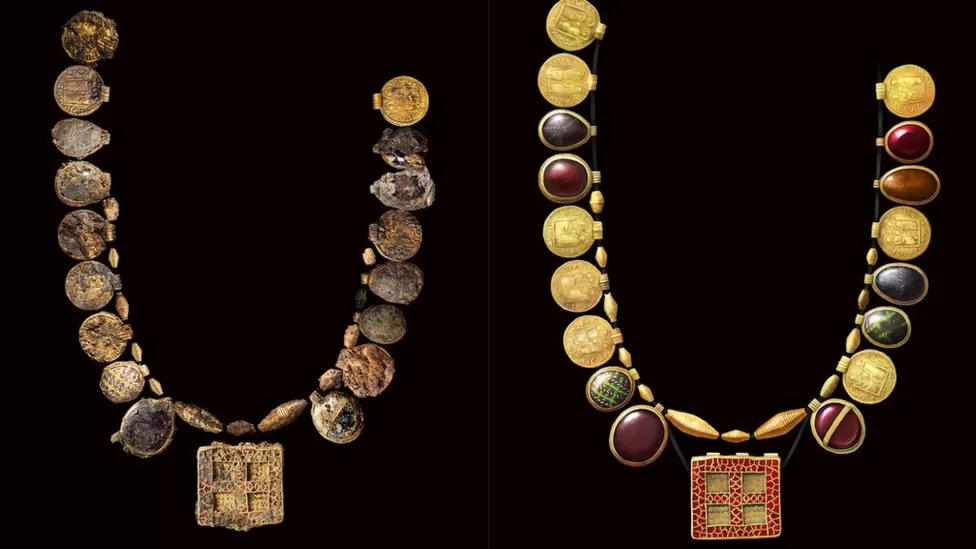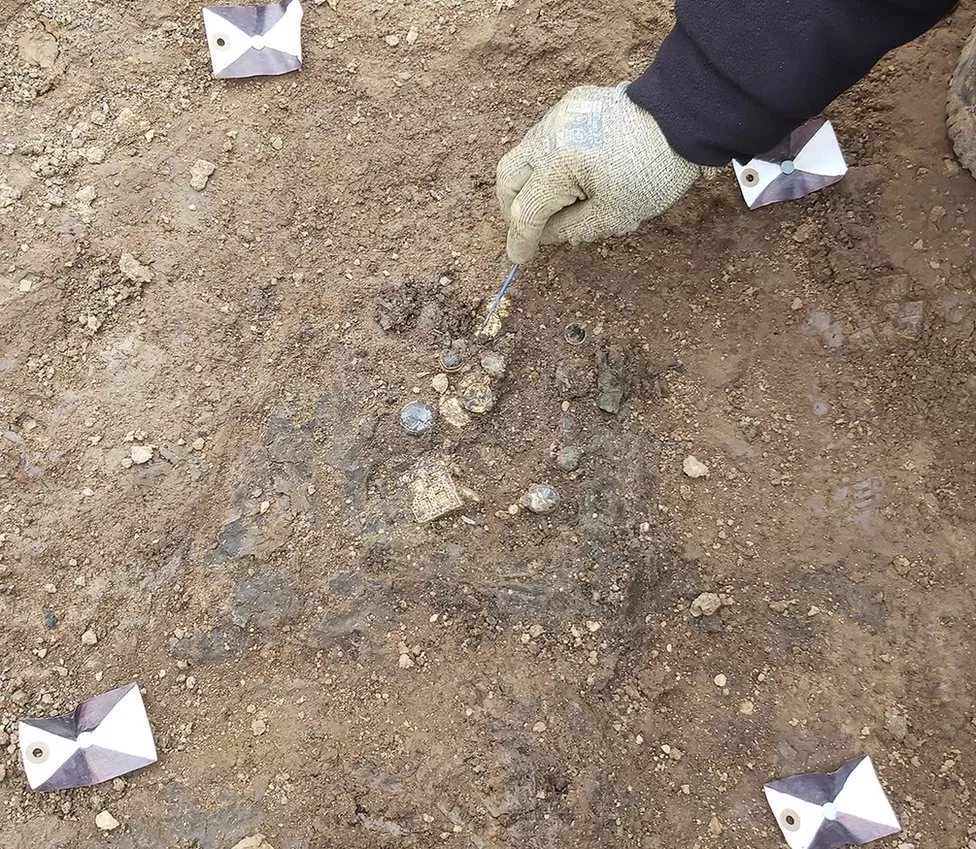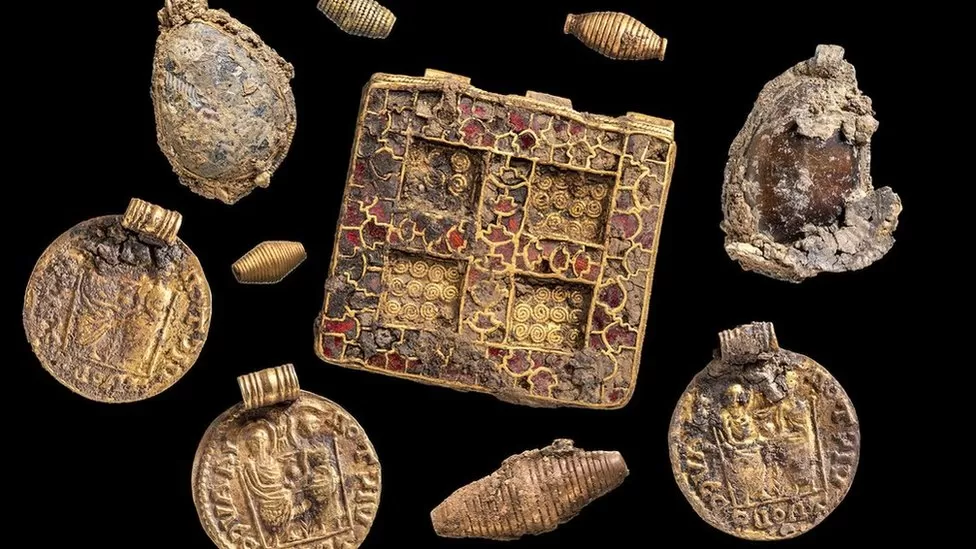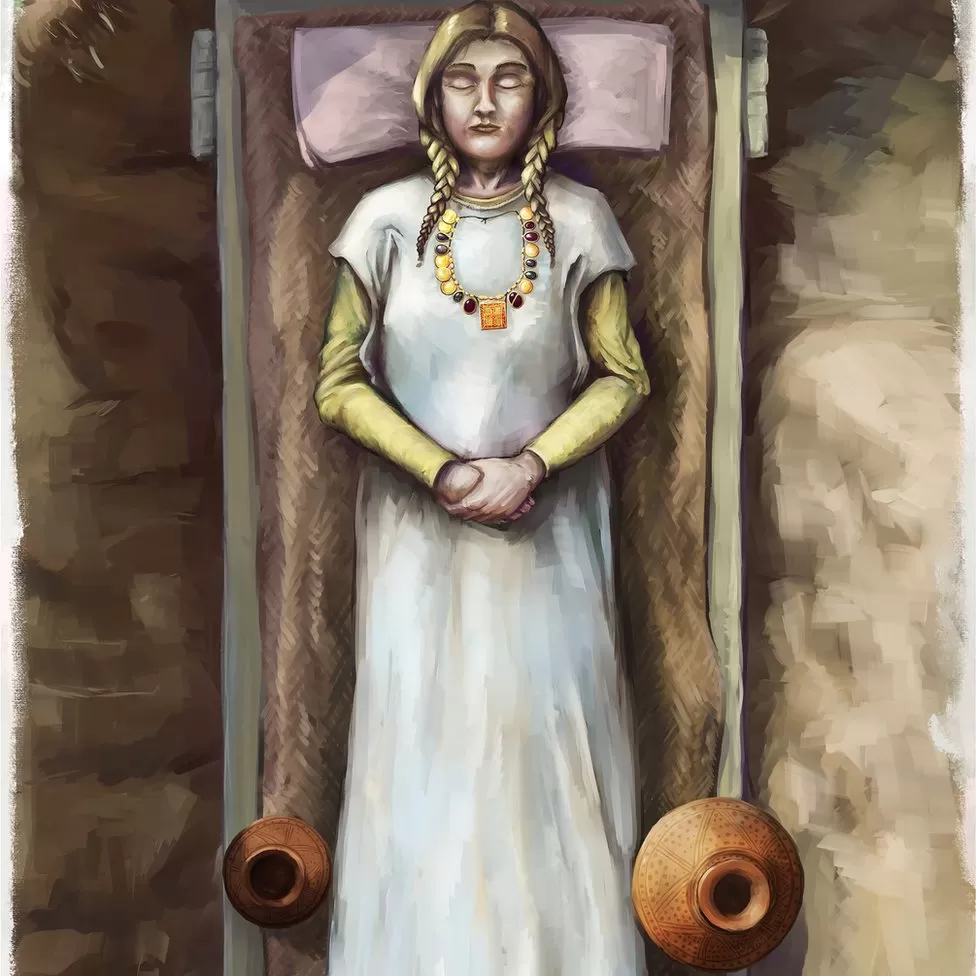1,300-Year-Old Gold Necklace Unearthed in England

Archaeologists have found a “once-in-a-lifetime” gold necklace dating back to 630-670 AD and described as the richest of its type ever uncovered in Britain.
The jewellery, found near Northampton, has at least 30 pendants and beads made of Roman coins, gold, garnets, glass and semi-precious stones.
The 1,300-year-old object was spotted in a grave thought to be of a woman of high status, such as royalty. Experts hailed the discovery during the summer as internationally significant.
Archaeologists from the Museum of London Archaeology (Mola) found the necklace during excavations ahead of a housing development in Harpole, west of Northampton.
“When the first glints of gold started to emerge from the soil we knew this was something significant,” said Levente-Bence Balazs, who led a team of five from Mola.’
However, we didn’t quite realize how special this was going to be.
“We are lucky to be able to use modern methods of analysis on the finds and surrounding burial to gain a much deeper insight into the life of this person and their final rites.”


The rectangular pendant with a cross motif forms the centerpiece of the necklace and is the largest and most intricate element.
Made of red garnets set in gold, Mola specialists believe it was originally half of a hinged clasp before it was re-used.
The burial also contained two decorated pots and a shallow copper dish.
However, X-rays taken on blocks of soil lifted from the grave also revealed an elaborately decorated cross, featuring highly unusual depictions of human faces cast in silver. Mola conservators said the large and ornate piece suggests the woman may have been an early Christian leader.


Experts said the skeleton had fully decomposed apart from tiny fragments of tooth enamel. However, the combination of grave finds suggested it was of a very devout high-status woman such as an abbess, royalty, or perhaps both.

A handful of similar necklaces from this time have previously been discovered in other regions of England, but none are as ornate as the “Harpole treasure”, experts added.
The closest parallel is the Desborough necklace, found in Northamptonshire in 1876 and is now in the British Museum’s collections.
Simon Mortimer, RPS Archaeology Consultant, said: “This find is truly a once-in-a-lifetime discovery – the sort of thing you read about in textbooks and not something you expect to see coming out of the ground in front of you.
“It shows the fundamental value of developer-funded archaeology. Had they not funded this work this remarkable burial may never have been found.”
Early Medieval period timeline:
• 410 AD: Roman rule of Britain ends
• 5th-6th Centuries: People from modern-day Germany, southern Scandinavia, and The Netherlands settle in southern and eastern Britain
• Late 6th-7th Centuries: Christianity gradually spreads across southern and eastern Britain and starts to appear in elite burials
• 640-680 AD: The Harpole Treasure, a high-status burial, is buried in Northamptonshire
• 793 AD: A Viking raid on the monastery at Lindisfarne, off the coast of modern-day Northumberland, marks the start of Viking raids on Britain
• 899 AD: King Alfred the Great dies
• 1066 AD: William the Conqueror defeats Harold and becomes King of England, ending the Early Medieval period
Liz Mordue, the archaeological advisor for West Northamptonshire Council, said: “This is an exciting find which will shed considerable light on the significance of Northamptonshire in the Saxon period.”
The discoveries will be featured on BBC Two’s Digging for Britain in January, with Prof Alice Roberts getting an exclusive look at the objects and delving deeper into the ongoing conservation and analysis.